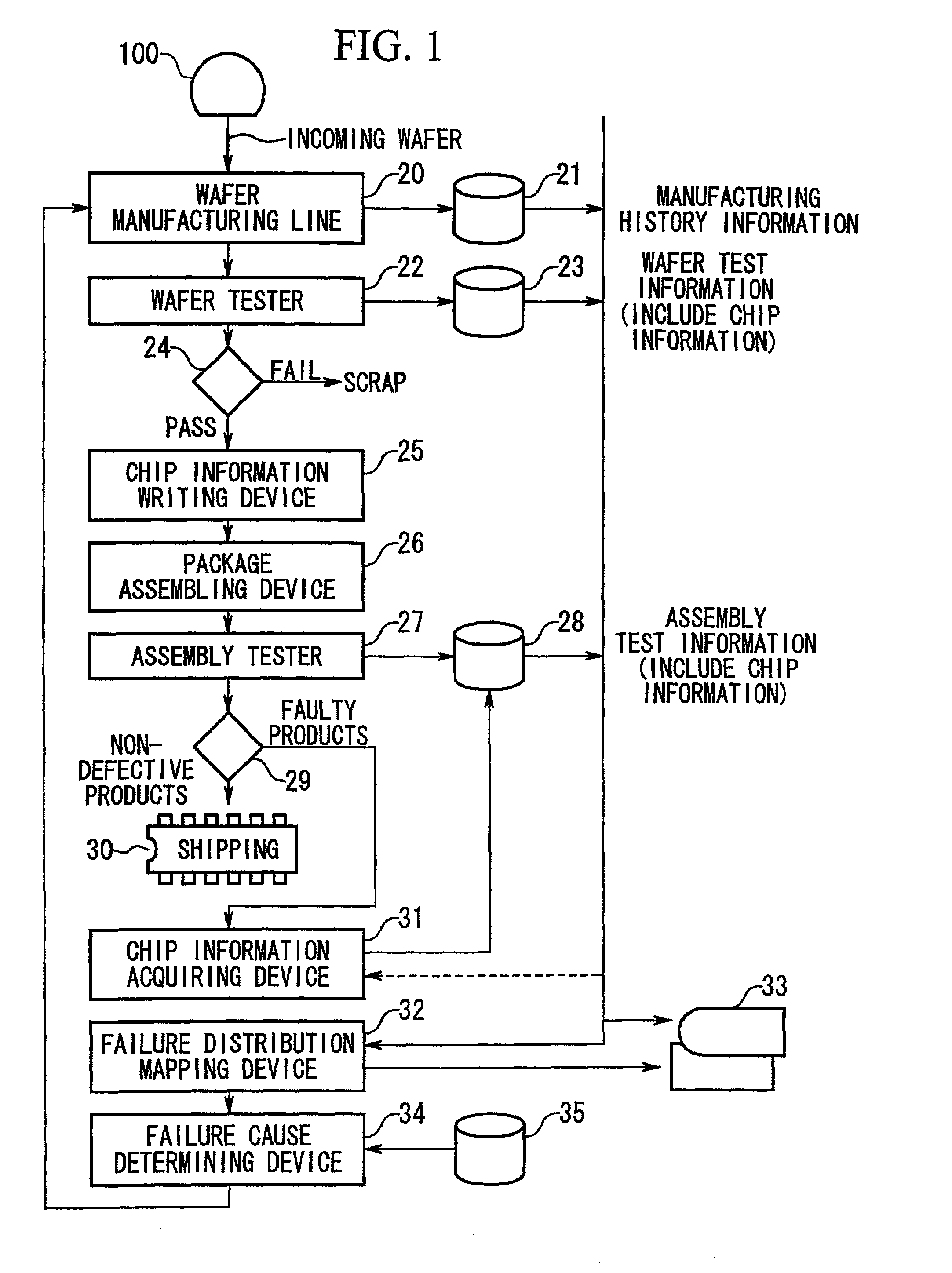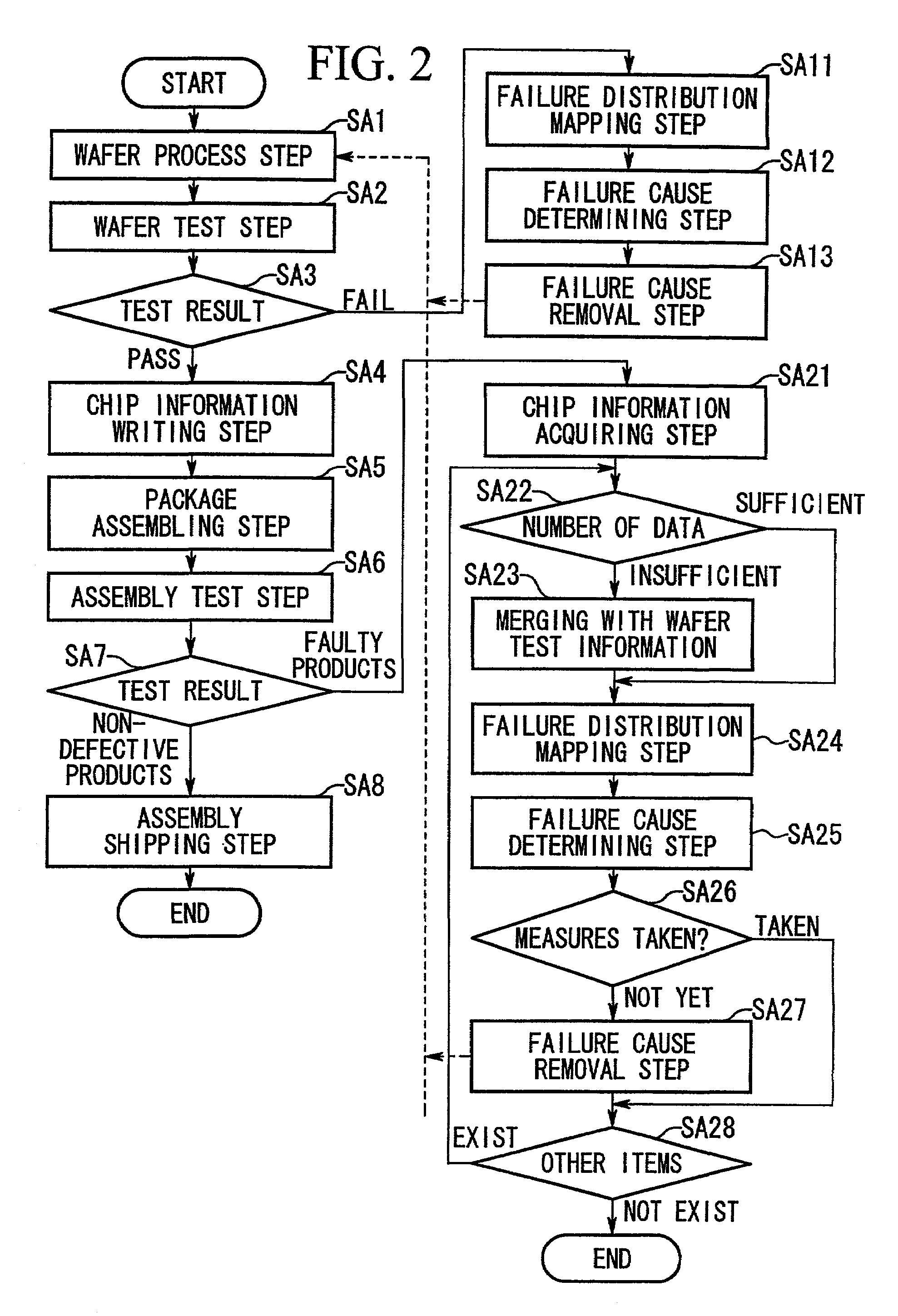Method of manufacturing semiconductor devices
a manufacturing method and semiconductor technology, applied in the direction of semiconductor/solid-state device testing/measurement, instruments, nuclear elements, etc., can solve the problems of complex devices, difficult to ship the needed semiconductor devices stably within an acceptable time period, and low yield rate, so as to improve the yield of chips. , the effect of stable production of semiconductor devices
- Summary
- Abstract
- Description
- Claims
- Application Information
AI Technical Summary
Benefits of technology
Problems solved by technology
Method used
Image
Examples
first embodiment
[0079]FIG. 1 is an illustration showing the structure of a semiconductor device manufacturing system in accordance with a first embodiment of the invention, and FIG. 2 is a flow chart which explains the operation of the semiconductor device manufacturing system.
[0080]In FIG. 1, a wafer manufacturing line 20 is constituted by manufacturing devices for performing various semiconductor processes. In a wafer process step SA1 of FIG. 2, transistor elements and wirings are formed in the surface of a wafer 100 to fabricate a semiconductor device. Usually, twenty to fifty sheets of wafer 100 are placed in a carrier and fed as one processing unit (hereinafter referred to as “a lot”) to the wafer manufacturing line 20 to thereby subject them to predetermined wafer processes in predetermined manufacturing devices. Each lot is given a predetermined wafer processing lot number (hereinafter referred to as “a lot number” unless specified otherwise).
[0081]The given lot number is indicated on the ca...
second embodiment
[0115]FIG. 11 shows the structure of a semiconductor device manufacturing system provided in accordance with a second embodiment of the invention, wherein its elements corresponding to those in the first embodiment are designated by like reference numerals and their description will be omitted.
[0116]In the following description, it will be assumed that the semiconductor device to be manufactured is a memory such as a DRAM (dynamic random access memory) which comprises a plurality of memory cells and redundancy circuits which can replace memory cells having defectives (hereinafter referred to as “defective cell”).
[0117]A wafer 100 is fed to a wafer manufacturing line 20 in which the wafer is subjected to predetermined processing steps, as a result of which a plurality of semiconductor memories are formed in the wafer surface.
[0118]Herein, the wafer manufacturing line 20 means a series of processing steps up to the processing step for cutting the wafer into chips and includes all the ...
PUM
| Property | Measurement | Unit |
|---|---|---|
| Distribution | aaaaa | aaaaa |
Abstract
Description
Claims
Application Information
 Login to View More
Login to View More - R&D
- Intellectual Property
- Life Sciences
- Materials
- Tech Scout
- Unparalleled Data Quality
- Higher Quality Content
- 60% Fewer Hallucinations
Browse by: Latest US Patents, China's latest patents, Technical Efficacy Thesaurus, Application Domain, Technology Topic, Popular Technical Reports.
© 2025 PatSnap. All rights reserved.Legal|Privacy policy|Modern Slavery Act Transparency Statement|Sitemap|About US| Contact US: help@patsnap.com



